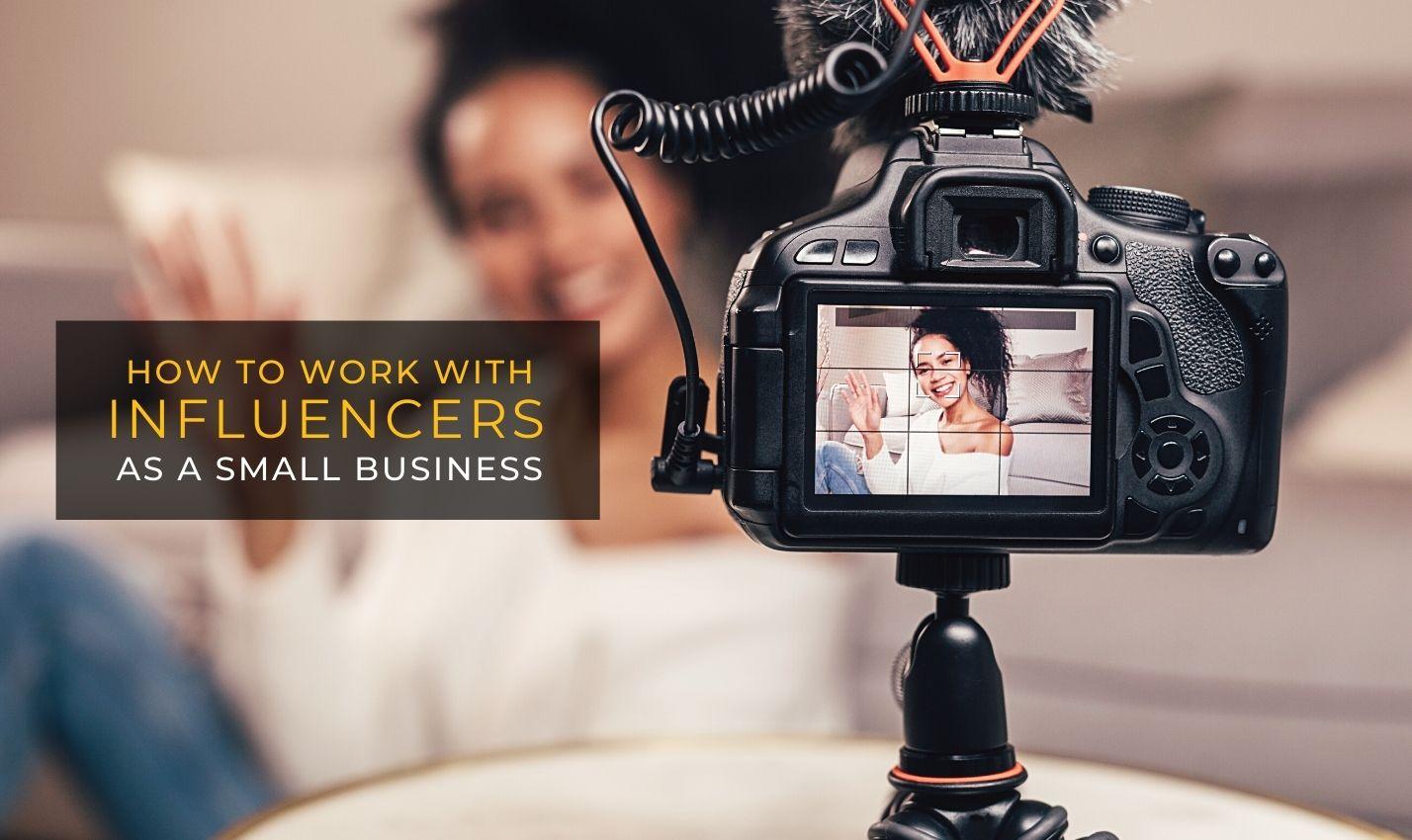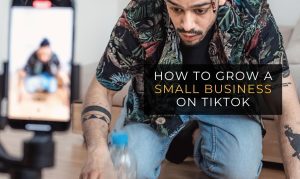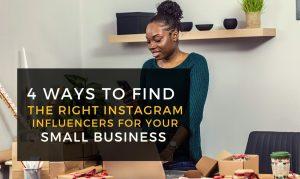
Influencer marketing is a 21st-century approach to “celebrity endorsements” that involve product posts from prominent social media figures.
Brands collaborate with influencers to increase brand awareness, grow their own social media platforms, and focus their marketing to a niche audience by collaborating with influencers in a specific field.
One reason influencer marketing is so effective is that it puts the relationship in the hands of the brand. This can’t be said for most advertising methods: push an ad out, pray that someone sees it and buys. With influencer marketing, you are connecting one-on-one with your audience to achieve deeper credibility.
And now, due to the advent of social media, anyone can become a storyteller. Influencer marketing is no longer just for large brands and agencies. Companies can now tell stories by connecting with individuals. Brands have also begun to realize that working with smaller micro-influencers may be cheaper, more meaningful and more beneficial in developing a stronger bond between brand and consumer.
In this article, I’ve outlined some strategies to consider if you’re looking to work with influencers on a small-business budget (and will be useful for startups and marketers in general).
How much does Influencer Marketing cost?

There are numerous factors that determine how much an influencer collaboration will cost.
The audience size of an influencer is not the only factor that determines the cost. Just like any job, the amount of time the influencer will spend on the collaboration plays a role in the price they’ll charge. A single post on Instagram requires less time than a YouTube video dedicated to your brand, which will usually be reflected in the cost.
Influencer marketing can certainly come at a high cost when it comes to collaborating with big-name social media figures. Some influencers charge up to $1 million per sponsored Instagram post.
Micro-influencers are creators with fewer than 10,000-20,000 followers. Not only are they more affordable, but they also tend to be highly trusted by their followers, have hyper-engaged audiences, and are viewed as more authentic since they don’t have any celebrity status. Their followers see them as relatable which makes them more likely to try a product they recommend. Even big-name brands with larger budgets are gravitating toward micro-influencers because of how effective they are.
Check out this article to learn more about the benefits of working with micro-influencers.
When it comes to recruiting micro-influencers, some are willing to be compensated only through free products. This is a strategy known as product seeding or influencer gifting.
Product Seeding

Product seeding is the process of sending out free products or gifts to social media influencers, usually in exchange for a post on their platform.
Every influencer is different when it comes to product seeding. Some creators are happy to take part in the collaboration if they are interested in trying your product. Others can be more reluctant and do not guarantee a post on their platform.
Because influencers vary in their willingness to take part in these types of collaborations, it is important to discuss the specific details of the campaign so you know what to expect.
Interesting in learning more about product seeding? Check out this article.
How to Reach Out to Influencers for Product Seeding
If you plan on reaching out to influencers for product seeding opportunities, it is best to be upfront and explain that you do not have a budget for the collaboration but are willing to send free products as compensation. Getting straight to the point and explaining that you see this as a gifting partnership will help you avoid wasting time negotiating a payment.
Here is a template you can use when contacting influencers:
Hi (influencer name),
I was reaching out because I love your content, and I admire how authentic you are with your audience! I was wondering if you would be interested in receiving free products from (your company) in exchange for a post on your feed/story. We’d be happy to send you (product names) for you to try! Let me know if this is something you’d be interested in!
(Your name)
After sending a message like this, you can expect some influencers to ask for some other type of monetary compensation. In these cases, you can be honest and tell the creator that you’re a smaller company and don’t have a budget for paid collaborations at this time. Some influencers are more open-minded when it comes to a startup or local business. Other influencers may tell you that they will accept the gift, but will only post if they are truly impressed by the product. In those instances, you can choose whether or not you wish to proceed with the collaboration.
Where to Find Influencers for Product Seeding
Reaching out to influencers yourself can be time-consuming and discouraging, especially since not all of them are willing to take part in an unpaid collaboration.
Because of this, it can be more worthwhile to connect with these creators on platforms that are designated for product seeing and gifting. This will ensure that the influencers you are working with are on the same page as you in terms of it being an “unpaid collaboration.”
There are lots of great platforms designated for product seeding.
Node App is a platform that’s built for product seeding and finding influencers for gifting campaigns. The app allows anyone to search for verified micro-influencers based on their niche, amount of followers, engagement, and location. From there, influencers who meet your criteria can opt into your campaign and you’ll be able to ship your product for them to post!
The main benefit of working with Node is that you already know creators who are signed up for the platform are interesting in taking part in gifting campaigns. This saves you the effort of having to explain what you’re looking for and negotiate with dozens of influencers yourself.
Social Platforms and Strategies
Brand collaborations vary depending on the social platform. The differences lie in the type of content, the quality of engagement and certain guarantees that will come from each collaboration. Here are some highlights from the most popular social platforms being used for Influencer Marketing in 2021.
View this post on Instagram
Instagram offers various types of content within one platform, which can make it overwhelming for marketers to envision their collaboration.
Instagram’s traditional, grid-photos are ideal for starting a conversation around your product. Other users can like and comment on these posts, making it easy to track engagement. Creators can also include lengthy captions in these posts, which are great to describe your product’s benefits.
Stories are also an option on Instagram. They are a great way for creators to show themselves unboxing your products, casually discussing the benefits of your product and displaying how your product works. When stories are in the form of videos, they are typically “one-shot,” and don’t involve much editing, making them easier for creators to work on.
Reels are Instagram’s latest addition, which are less than 30 seconds long and will also appear in the newsfeeds of those who follow the creator. Reels are a perfect tool to showcase your product in action. For example, if you sell a food product, creators could integrate your product within a recipe displayed through a reel. Reels are often more work for creators than other methods since they require more editing and creativity to produce.
Know Your Goals Before You Approach Micro-Influencers
When taking the Instagram-route to influencer marketing, it is important to understand that different creators have personal preferences when it comes to the type of content they produce. For example, some creators may not be comfortable writing a lengthy caption on a post if this is not something they typically do. It could come off as very “off-brand” for them.
Others may be unwilling to create a reel if it does not align with their personal usual content. Most creators charge different rates depending on the type of Instagram content. For some brands, the type of content is imperative to their campaign whereas others are willing to work around an influencer’s preferences. Have a solid understanding of what you want for your campaign before delving into negotiations with creators.
YouTube
While there are no time constraints for YouTube videos, most content will fall within the 7-20 minute range. This is significantly longer than the content you’ll see on other platforms, but most brands will only promote their product in one particular section of a YouTube video.
Since YouTube videos are longer, it is easy for the creator to make more meaningful content surrounding your product. For example, if you are a makeup brand, the creator can showcase a tutorial featuring your product within their routine. Viewers will watch the video for the purpose of learning about the makeup being used, so having your product embedded within that video is a very effective and authentic way to reach your target market. These details make the video valuable for the viewer, which distracts them from the fact that it is a paid brand sponsorship.
When participating in YouTube collaborations, it is important to find a YouTuber who relates to your product and creates content that your product could be implemented in. YouTube can be a great way to work with a creator who is an expert in your product category, whether it is fashion, beauty, health, fitness, gaming etc. You should discuss content details with the YouTuber to understand how they’ll be showcasing your product, the type of video you’d like your product to appear in and any details you’d like them to emphasize.
TikTok
@glamzillaxoIs this actually worth the hype or wut??????I try NEW KVD Beauty Good Apple Foundation Balm! @KVDBeauty #AD #goodapple♬ original sound – GLAMZILLA
TikTok has quickly risen to popularity as a social platform that features short videos which are 1 minute or less in length. While many influencers have built their name on TikTok, there are questions arising regarding how effective TikTok really is when it comes to influencer marketing.
One of the biggest differences between TikTok and other social platforms is the fact that it revolves around a For You page, which is essentially content that is highly curated to each individual user. While TikTok has been praised for the algorithm behind the infamous For You page, this aspect of the platform has a few implications for marketers.
First, the For You page mostly features content from creators who users do not follow. While other platforms revolve around content from those who you do follow, this is a secondary aspect of the content on TikTok. While there are obviously TikTok users who are widely followed, their content is not necessarily showcased first and foremost. In a way, this undermines their influence, meaning a collaboration may not be easily quantified just by their number of followers.
Second, many TikTok creators theorize that the algorithm actually downplays content that appears to be an advertisement. If there is one thing we know about the TikTok algorithm, it’s that it is incredibly effective at what it does. Avoid language that indicates the nature of the post, such as “sign up for…”, “use my promo code” or “it is only $50!” This is key in the caption, video text, and spoken language.
TikTok has much more virality potential than other social platforms because their algorithm is based on many other factors besides the number of followers. You’ll see a much wider gap in the views a creator gets on each of their videos. It can be harder to guarantee the level of engagement you’ll actually get from a collaboration. However, this evens the playing field for smaller creators. Choose creators based on the quality of their content and understand if their engaged followers align with your brand and product.
Creators can leverage popular “trends” on TikTok – this includes sounds, dances, memes etc. Trends change quickly, so it is important to work alongside creators to stay on top of them! Working around a popular trend will help your content appear on more For You pages and get more engagement.
Final Thoughts
In conclusion, a small marketing budget isn’t a barrier to working with influencers. Smaller creators and micro-influencers have become popular outlets for content and marketing exposure.
Major brands are also relying more on micro-influencers because of their high engagement rates and authenticity. Methods like influencer gifting and product seeding make influencer marketing accessible to businesses of any size.
Communication is always the best policy when discussing gifting opportunities with influencers. Make sure both of you are on the same page when it comes to the details of the campaign and the type of content they’ll be posting. While influencer gifting can work on a variety of social platforms, it is important to understand the key differences between each one so you can choose which one is best for your product.




